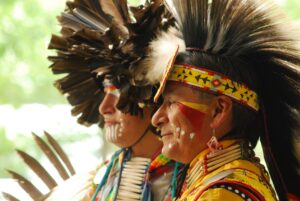It is in the best interests of a First Nations child to stay with the current caregivers who are pursuing an adoption plan. Although it is encouraged that her First Nations paternal grandmother be in contact and included in her upbringing, the grandmother’s custody application is dismissed. The child should not have her living arrangements disrupted, as she is loved and cared for; one caregiver is a member of the First Nation; and there is cultural continuity.
T.L., who turned nine years in 2021, was first apprehended in the fall of 2015 by the Ministry of Social Services and then subsequently transferred to the Yorkton Tribal Council Child and Family Services Inc [“YTCCFS”]. Following her apprehension, she began living with her grandfather, M.S. on White Bear First Nations. M.S. had T.L. enrolled at the local playschool and called upon his sisters from time to time to assist with her care. Nevertheless, M.S. had concerns raising her by himself, thereby D.L. and C.Y., her current caregivers, welcomed T.L. as their daughter and do not differentiate between her and their other children. M.S. continues to play an active role in T.L.’s life, and she continues to have frequent visits with her grandfather. YTCCFS now requests a permanent order pursuant to The Child and Family Services Act [“CFSA”] with respect to T.L. with the intent of pursuing an adoption plan with her current caregivers.
A.D. is T.L.’s paternal grandmother. A.D. had no knowledge that T.L. was her granddaughter until her son informed her of the DNA results in the summer of 2018. Upon learning of T.L., A.D. contacted YTCCFS. A.D. was first introduced at D.L.’s and C.Y.’s home. A.D. was aware that YTCCFS supported T.L. remaining with D.L. and C.Y., but she was opposed to that arrangement and that year applied for an order finding her to be a person of sufficient interest, custody and access to T.L. A.D. asks for custody pursuant to The Children’s Law Act, [“CLA”] or, alternatively for T.L. to be placed in her care as a person of sufficient interest pursuant to the CFSA.
As T.L. is First Nations and a member of White Bear First Nations, consideration of her best interests requires thought be given to her cultural, linguistic, religious and spiritual upbringing and heritage, among other things. Regardless of which Act is applied, T.L.’s best interests must be considered. Some of the factors to be considered under the CFSA are similar to those found in the CLA but there are additions (Saskatchewan (Minister of Social Services) v S(EK) (1996), 146 Sask R 46 (QB)). Bill C-92 sets out principles which underly the legislation, including the best interests of the child and cultural continuity. It is required to the extent possible, that these factors be construed in a manner consistent with the law of the Indigenous group. White Bear First Nations “opposes permanent wardship orders and adoption orders involving non-[A]boriginal foster parent(s) when there is a White Bear First Nations band member(s) or other First Nations individual(s) or family member(s) able and willing to care for the child(ren) in question” (White Bear First Nations, Band Council Resolution).
T.L., through her grandfather, M.S., has been exposed to her cultural and spiritual heritage. It was through M.S. that T.L. was introduced to D.L. and C.Y. D.L. and C.Y. are part of M.S.’s family. T.L. developed strong relationships with D.L. and C.Y., whom she now calls “mom and dad”, and her siblings Z.L. and G.L., who reside in the home with her. D.L. is a member of White Bear First Nations, and although his spouse, C.Y. is Caucasian, she encourages T.L. in cultural activities. Her sister, T.H., who she had never met prior to M.S. taking her on a visit in 2017, now resides in D.L.’s and C.Y.’s home with her and have grown close. Bill C-92 specifically speaks to the need for stability. T.L. has had a connection to M.S. her entire life and has maintained that connection though she now lives with D.L. and C.Y. She is settled in their home and enjoys her school and friendships.
It is unfortunate that the parties are in conflict and compelled to speak ill of the other and find fault in the other’s care of T.L. Both A.D. and M.S. are residential school survivors, and both turned to alcohol in early adulthood. Both rediscovered their cultural and spiritual heritage following their commitments to sobriety. Even if they are not up to A.D.’s standards, it is unclear why A.D. as a grandmother and Elder, particularly when she lives minutes away, could not provide additional guidance and input respecting cultural heritage without the necessity of having T.L. live with her. The current care arrangement with D.L., C.Y. and M.S. is in keeping with the tradition of family stepping up to care. A.D. is a blood relative and is also family but until two years ago, she was a stranger.
The relationship most important to T.L. is her relationship with M.S. The parenting plan will secure that relationship. Both D.L. and M.S. are members of White Bear First Nations and an ongoing relationship with the community is therefore ensured. M.S., D.L. and C.Y. will also ensure cultural continuity and expose T.L. to Indigenous culture and heritage. T.L. can only benefit should A.D. choose to supplement that exposure through her own involvement with her granddaughter. YTCCFS was of the view that T.L. could only benefit from relationships with both her maternal and paternal sides of the family. The plan is also consistent with the White Bear First Nations’ band council resolution as T.L. will remain with a member of White Bear First Nations, D.L. YTCCFS should be permitted to pursue the plan as recommended as it will ensure T.L. has the stability she requires and the ongoing love of family. It is in T.L.’s best interests that she be permanently committed to the Ministry with a view to pursuing the adoption by D.L. and C.Y .



